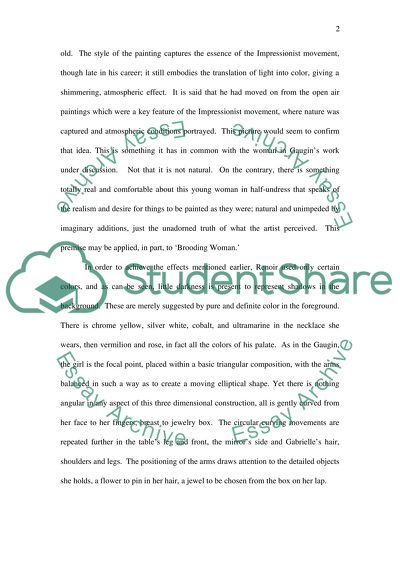Cite this document
(“Comparison of Eugene Henri Paul Gaugins Brooding Woman (1891) and Essay”, n.d.)
Comparison of Eugene Henri Paul Gaugins Brooding Woman (1891) and Essay. Retrieved from https://studentshare.org/miscellaneous/1508153-comparison-of-eugene-henri-paul-gaugins-brooding-woman-1891-and-gabrielle-with-jewel-box-by-auguste-renoir-1910
Comparison of Eugene Henri Paul Gaugins Brooding Woman (1891) and Essay. Retrieved from https://studentshare.org/miscellaneous/1508153-comparison-of-eugene-henri-paul-gaugins-brooding-woman-1891-and-gabrielle-with-jewel-box-by-auguste-renoir-1910
(Comparison of Eugene Henri Paul Gaugins Brooding Woman (1891) and Essay)
Comparison of Eugene Henri Paul Gaugins Brooding Woman (1891) and Essay. https://studentshare.org/miscellaneous/1508153-comparison-of-eugene-henri-paul-gaugins-brooding-woman-1891-and-gabrielle-with-jewel-box-by-auguste-renoir-1910.
Comparison of Eugene Henri Paul Gaugins Brooding Woman (1891) and Essay. https://studentshare.org/miscellaneous/1508153-comparison-of-eugene-henri-paul-gaugins-brooding-woman-1891-and-gabrielle-with-jewel-box-by-auguste-renoir-1910.
“Comparison of Eugene Henri Paul Gaugins Brooding Woman (1891) and Essay”, n.d. https://studentshare.org/miscellaneous/1508153-comparison-of-eugene-henri-paul-gaugins-brooding-woman-1891-and-gabrielle-with-jewel-box-by-auguste-renoir-1910.


